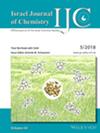由折叠蛋白反应的 IRE1-XBP1s臂形成的蛋白质糖基化模式
摘要
蛋白质糖基化蛋白质翻译后修饰,包括磷酸化、乙酰化、泛素化等,具有关键的调控水平,可以显著改变蛋白质的结构和功能,起到调整活性的分子开关或调速器的作用。许多翻译后修饰都是专门针对特定亚细胞区和客户的,例如内质网(ER)和高尔基体中由一系列糖基转移酶和糖苷酶介导的复杂的蛋白质 N-糖基化途径。蛋白质糖基化涉及氨基酸侧链与糖的共价修饰,从而产生线性或支链结构(聚糖;图 1)。糖基化的结果会影响蛋白质的功能、细胞-细胞识别、细胞-基质相互作用等。2图1在图形浏览器中打开PowerPoint蛋白质N-连接糖基化是一种共翻译修饰和翻译后修饰,涉及在穿过分泌途径的蛋白质中特定氨基酸序列的天冬酰胺侧链上安装聚糖。A: 14 个残基的前体寡糖首先以分步的方式合成,同时附着在 ER 膜上的焦磷酸多糖分子上。核苷酸糖形式的单糖底物通过各自的转移酶加入到不断增长的糖链中。然后,在多肽从核糖体转运到 ER 时,寡糖基转移酶(OST)复合体将寡糖连接的前体添加到新生的 ER 客户蛋白中,然后寡糖连接的前体需要翻转酶的作用。需要注意的是,N-聚糖也可以通过 OST 在翻译后安装。安装前体后,折叠和初步修剪在 ER 中进行,新生糖蛋白被输送到高尔基体进行进一步处理。B:ER 和高尔基体中的聚糖修饰酶通过特异性酶依次去除和添加单糖来处理 N-聚糖,最终产生大量潜在的聚糖结构,包括杂交聚糖、复合聚糖、核心岩藻糖基化聚糖和硅烷基化聚糖。与 DNA、RNA 和蛋白质等其他生物大分子不同,聚糖的合成不需要模板,而是依赖于核苷酸激活的单糖作为构建模块、与之相关的转运体3 以及介导糖的添加和去除的酶的可用性/合成。虽然细胞中会出现几种形式的蛋白质糖基化(包括但不限于N-连接、O-连接、C-连接和S-连接形式的糖基化),但天冬酰胺的N-连接糖基化可能是最常见的。N-糖基化的特点是分步合成 14 元前体寡糖,将前体整体转移到 ER 客户蛋白中的(典型的)Asn-Xaa-Ser/Thr(其中 Asn=天冬酰胺;Xaa=除脯氨酸外的任何氨基酸;Ser=丝氨酸;Thr=苏氨酸)序列上,然后由 ER 和高尔基定位酶进一步分步加工(图 1),6 最终产生种类繁多的高度分支结构。N-糖基化在进化过程中是保守的7 ,对健康和疾病有着广泛的影响8。事实上,所有生物界都具有 N-糖基化功能,尽管它们可能根据生物体的不同而利用专门的构建模块。


The unfolded protein response (UPR) is a sensing and signaling pathway that surveys the endoplasmic reticulum (ER) for protein folding challenges and responds whenever issues are detected. UPR activation leads to upregulation of secretory pathway chaperones and quality control factors, as well as reduces the nascent protein load on the ER, thereby restoring and maintaining proteostasis. This paradigm-defining view of the role of the UPR is accurate, but it elides additional key functions of the UPR in cell biology. In particular, recent work has revealed that the UPR can shape the structure and function of N- and O-glycans installed on ER client proteins. This crosstalk between the UPR's reaction to protein misfolding and the regulation of glycosylation remains insufficiently understood. Still, emerging evidence makes it clear that the UPR, and particularly the IRE1-XBP1s arm of the UPR, may be a central regulator of protein glycosylation, with important biological consequences. In this review, we discuss the crosstalk between proteostasis, the UPR, and glycosylation, present progress towards understanding biological functions of this crosstalk, and examine potential roles in diseases such as cancer.

 求助内容:
求助内容: 应助结果提醒方式:
应助结果提醒方式:


